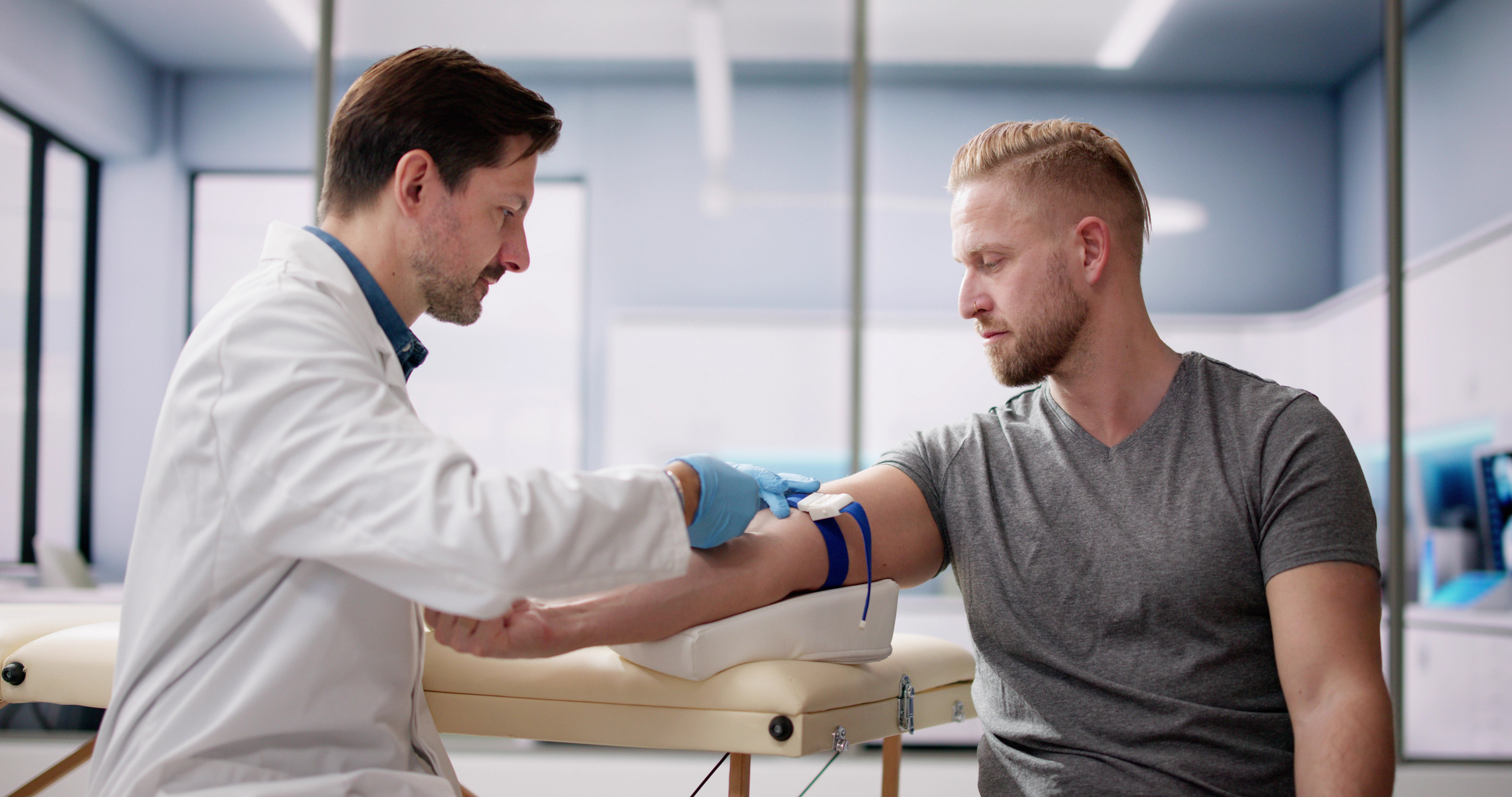Men’s Guide to Prostate Conditions

Men’s Guide to Prostate Conditions
Prostate health is crucial for men to understand, as the prostate plays an important role in men’s overall well-being. Prostate conditions are common and typically begin over the age of 40 – but they can impact men of all ages.
This guide aims to provide a comprehensive resource for men seeking to understand and maintain their prostate health. Whether you’re in your twenties or into your retirement years, Florida Cancer Specialists & Research Institute can offer valuable insights and expert advice to help you navigate your prostate health and make informed decisions.
Common Types of Prostate Conditions
While there are numerous unique conditions that can occur in the prostate, the three most common conditions men experience are prostatitis, benign prostatic hyperplasia, and prostate cancer.

Prostatitis
Prostatitis is the inflammation of the prostate gland. The cause varies depending on the type of prostatitis, but is often caused by an infection in the prostate gland. Prostatitis can occur in men of all ages, but appears more commonly over the age of 50. There are four types of prostatitis men should be aware of, as their symptoms are different.
- Acute bacterial prostatitis – An acute infection of the prostate gland that is caused by a bacterial infection and comes on suddenly. Symptoms include sudden fever and chills, blood in the urine and/or irritation while urinating, and pain in the lower back and rectum.
- Chronic bacterial prostatitis – A reoccurring prostate infection. Symptoms include reoccurring urinary tract infections (UTIs), painful urination and ejaculation, and pelvis/genital pain. Some men experience no symptoms of chronic bacterial prostatitis at all.
- Chronic prostatitis – Also called chronic pelvic pain syndrome, its exact cause is unknown. Symptoms include pain in the lower back, in the groin, or at the tip of the penis.
- Asymptomatic inflammatory prostatitis – Shows no symptoms, but can be diagnosed during a routine prostate exam.
Benign Prostatic Hyperplasia
Benign prostatic hyperplasia (BPH), also known as enlarged prostate, is a noncancerous enlargement of the prostate. This commonly occurs in men over 60. While the cause of BPH is uncertain, scientific studies have suggested that BPH may occur due to aging and hormone/testosterone imbalances. Symptoms of BPH include abnormal urination (difficulty urinating and urinating frequently).
Prostate Cancer
is a malignant growth within the prostate. Prostate cancer is one of the most common cancers in American men. Cancer develops when normal cells in the prostate gland become abnormal and begin to grow out of control. Symptoms include body pain in the hips, back or chest, abnormal urination (difficulty urinating and urinating frequently), and/or erectile disfunction.

Are You at Risk?
While men over 45 become more at risk for prostate cancer, there are factors other than age that play into your prostate health.
- Prostatitis – Some other risk factors are if you have or recently had a catheter or a recent bladder infection.
- Benign prostatic hyperplasia (BPH) – Some other risk factors include family history of benign prostatic hyperplasia, obesity, heart disease, type 2 diabetes, and erectile dysfunction.
- Prostate cancer – Family history and genes play a major role in your risk factor for prostate cancer. According to the American Cancer Society, prostate cancer develops more often in African American men, and is more common in North America.
To learn about additional risk factors of prostate cancer, read our Prostate 101 article here.

Checking for Prostate Conditions, Including Prostate Cancer
Many doctors recommend to have your first prostate exam at the age of 45 if you have a family history of prostate cancer, and age 50, if you are at an average risk. A prostate exam is a screening method to detect early prostate cancer and prostate conditions that sometimes have no symptoms at all.
If you’re curious how to check for prostate cancer, the three common prostate examinations are a blood test, a urine test, and a rectal exam.
- Blood tests – Your doctor will collect a blood sample to test your PSA levels. Prostate cells create a protein called PSA. Men who have prostate cancer or other prostate conditions may have a higher amount of PSA in their blood. Other causes for high PSA levels are aging and normal fluctuations. To ensure a correct diagnosis, the blood test may be followed up with a urine and/or rectal exam.
- Urine tests – Your doctor will collect a urine sample to test for a bacterial infection in the urine.
- Rectal exam – One of the more well-known tests, during a rectal exam, your doctor will insert a lubricated, gloved finger into your rectum. Your doctor will press and feel the prostate, checking for signs of enlargement, tenderness, or any lumps that could indicate cancer.
Keep in mind, a screening for prostate cancer is used to look for possible signs of prostate cancer, and may not tell for sure whether you have cancer. If the results of the test are abnormal, you will probably need a prostate biopsy to know for sure whether you have cancer.
Prostate Cancer Treatment Options
The treatment options for these conditions range from lifestyle changes and medication to surgical procedures and radiation therapy. Treatment options depend on the specific diagnosis, your health and preferences, and the stage of the conditions. If diagnosed with any of these prostate conditions, reach out to your physician to see which treatment option is right for you.
Tips for a Healthy Prostate
- Schedule regular checkups – Prostate cancer is often slow-growing and can take years to become detectable. Meet with your doctor to have routine checkups to catch potential issues early on, and be proactive in getting treatment.
- Track your symptoms – Stay alert of your body’s symptoms or abnormal body changes.
- Eat a balanced diet – Prioritize antioxidant-rich foods and limit red and processed meats.
- Exercise the pelvic floor – For urination issues, practice exercising the pelvic floor to strengthen the muscles under the bladder and large intestines.
- Exercise – Like with most health-related issues, staying active and maintaining a healthy weight will benefit the prostate.
Take Control of Your Prostate Health
1 in 8 men will be diagnosed with prostate cancer during his lifetime. So, whether you’re in your twenties or well into your senior years, understanding your prostate, early testing, detection, and access to appropriate treatments play key roles in managing prostate conditions. While having these conversations can be difficult, consulting with a healthcare professional and having those open conversations is essential for personalized guidance and the best approach to taking care of your prostate.
If you are seeking help, Florida Cancer Specialists & Research Institute experts provide treatments for prostate cancer as well as for general prostate conditions.





Comments
Mike Bradshaw says
Add comment
FCS replies
Add reply